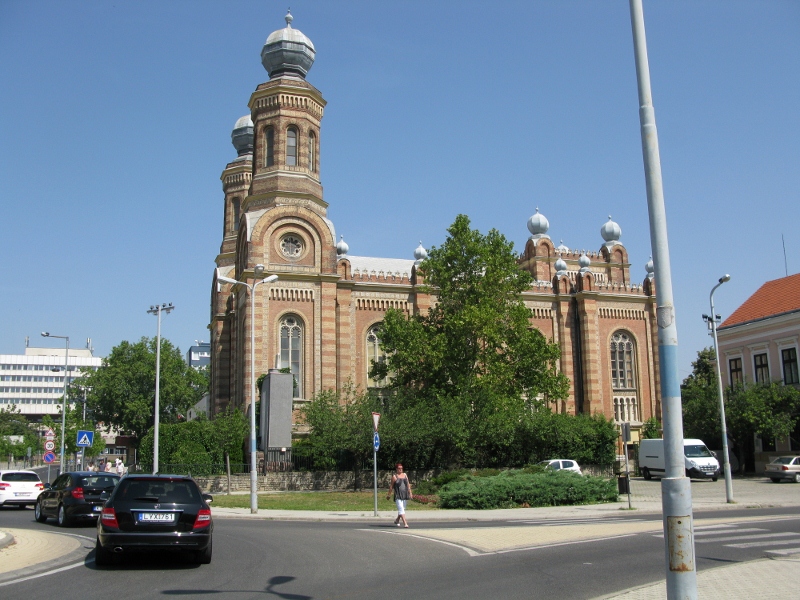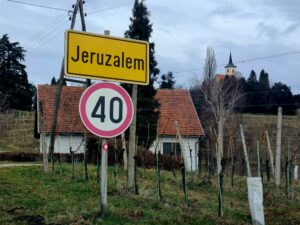Szombathely translates literally as the Saturday Place and is the oldest and tenth largest city in Hungary. Dating back to 45 AD, Constantine the Great is said to have visited a number of times. Hungarians finally took up residence in 900 AD after a string of other nationalities had been and gone. Beset by tragedy, the city has had quite a colourful past. In 1710, 2000 people lost their lives in a plague. In 1716 the city was destroyed by a fire, rebuilt and again destroyed in 1817.

After the Treaty of Trianon, the city ceased to be the centre of Western Hungary as it was now just 10 km from the new border with Austria. On three days in July 1944, 4228 Jews were deported by the Hungarian authorities from Szombathely to Auschwitz.
The Iseum, a temple to the Goddess Isis, also known as the Isis Szentély Romkertje, is a 2nd century AD Roman temple site dedicated to the Egyptian goddess Isis. It was excavated in the 1950s. Today, part of the site has been reconstructed and you can still see the ruins of two temples.
Walking around the town on a Saturday was a little surreal. Perhaps because it was so hot and the weather was keeping the people at bay. With a population of just 85 000 , it’s not exactly a metropolis but I’d have expected to see more bodies. Like many other towns and cities in Hungary and indeed elsewhere, multinational chains have made their way to the high street but some locally owned boutiques are still clinging on for dear life.


At night, various cafés dot the town’s square and people sit underneath the awnings talking quietly. We ate at the Pannónia Ettérem and Café on Friday night, thankful to find somewhere open and still serving. The food was good, service pleasant, and atmosphere just right. A cocktail afterwards at Paparazzi rounded off the night nicely – and yes, they make a good cosmopolitan.
The next day, coffee at the Café Molo was a joy. Nestled right beside the music school, I enjoyed a morning cappuccino to strains of jazz and blues while looking out over the Iseum. A picture perfect morning. The city is a curious mix of old and new and while it has a certain charm – not least the connection to Ireland via the fictitious Leopold Bloom – there is something missing. I can’t quite put my finger on it. It’s as if the city is in some sort of parallel universe, untouched by the angst and normalcy of twenty-first century living. I felt as if I was walking on a glass floor looking in but never really being allowed inside. Most peculiar.
Share this:
- Click to share on Twitter (Opens in new window)
- Click to share on Facebook (Opens in new window)
- Click to share on Pinterest (Opens in new window)
- Click to share on LinkedIn (Opens in new window)
- Click to share on Reddit (Opens in new window)
- Click to share on WhatsApp (Opens in new window)
- Click to share on Pocket (Opens in new window)
- Click to share on Telegram (Opens in new window)
- Click to email a link to a friend (Opens in new window)










4 Responses
‘Saturday Place’ because of Saturday markets, which clearly don’t happen now! Unless, of course, that’s where everybody was!! The German name is Steinamanger ‘Stone in the meadow’, as the old Roman town of Savaria (Latin name of Sz.) was wrecked in an earthquake and the dressed stone lay about until it was re-used.
Heard there was a lot of spy activity in this town, back in the day.
Very likely – the Germans made the non-combattant nations move their embassies to the western frontier region in 1944.